
How to do Guided Meditation with Clients
The renowned psychiatrist Milton H. Erickson was known for his unconventional yet highly effective approach to hypnosis and psychotherapy. One famous anecdote illustrates the essence of his technique:
As recounted by Erickson’s protégé Jeffrey Zeig, Erickson once watched Zeig, then a graduate student, prepare to smoke a pipe before a therapy session. Erickson proceeded to tell an elaborate, hour-long story about a friend who was hopelessly awkward with every aspect of pipe smoking – how to hold the pipe, where to put it in the mouth, how to exhale the smoke. By making the act of smoking overly conscious and cumbersome, Erickson deftly disrupted Zeig’s habitual pattern. The very next day, Zeig resolved, “I am not smoking anymore,” and never touched his pipe again.
This seemingly simple intervention exemplifies Erickson’s uncanny ability to perceive the underlying structure of a person’s subjective reality and craft a bespoke “narrative intervention” that initiates a profound shift from within. Erickson understood that lasting change emerges not from direct suggestion, but from engaging the client’s own capacity for unconscious problem-solving.
The principles and techniques of Ericksonian hypnosis, far from being limited to formal trance induction, can be seamlessly integrated into an infinite variety of therapeutic interactions – including the process of crafting personalized guided meditations. By attuning to each client’s unique inner world and harnessing their innate resources, therapists can create potent invitations for mind-body healing and transformation.
Core Principles of Ericksonian Hypnosis

While the methods of Ericksonian hypnosis are fluid and endlessly adaptable, they rest on certain foundational assumptions about the nature of the human mind and the process of change:
Utilization:
Every aspect of the client’s experience – their behaviors, beliefs, preferred metaphors, bodily symptoms – can be “utilized” as a pathway to therapeutic change. Utilization rejects standardized scripts; interventions arise from the living connection between therapist and client.
Unconscious Potentials:
The client already possesses the resources needed for healing, even if those resources are not yet consciously recognized. The therapist’s task is to evoke and engage “dormant potentials” outside of the client’s everyday awareness.
Strategic Indirection:
Resistance is minimized through the artful use of indirect suggestion, metaphor, and other “hypnotic language patterns” that communicate to the client’s unconscious mind without triggering conscious objection.
Response-Based Orientation:
The therapist proceeds flexibly, constantly tracking the client’s responses and allowing their feedback – in words, body language, and felt sense – to guide the shape of the unfolding intervention.
Experiential Focus:
Ericksonian hypnosis shifts attention from why problems occur to how the structure of the client’s present-moment experience can be altered or recontextualized to support well-being.
Destabilization:
Before a system – whether an individual or family – can reorganize at a higher level of functioning, the habitual patterns maintaining the symptom must be disrupted or “destabilized.” Confusion, uncertainty and even a transient “worsening” of the symptom may precede a therapeutic breakthrough.
Growth and Individuation:
The ultimate goal of therapy is not merely symptom relief, but an expanded sense of self and possibility – a movement toward greater flexibility, choice, and actualization of the client’s unique potentials.
Integrating Ericksonian Methods into Guided Meditation
Guided meditation provides an ideal context for applying Ericksonian insights. As in hypnosis, the client enters a state of heightened focus and suggestibility, allowing the therapist’s words to mobilize mind-body responses outside of their everyday awareness. Some key elements to consider:
Somatic Utilization
Somatically-oriented meditations like the body scan can be tailored to the client’s specific body experience. If a client tends to dissociate from a body area, for instance, the meditation might incorporate permissive invitations to “allow any sensations that may be present to gently draw your awareness…” Rather than imposing a structure, the therapist utilizes the client’s emergent somatic experience.
Metaphorical Language
Erickson recognized the power of artfully-deployed metaphor to bypass resistance and engage unconscious problem-solving. A meditation for a stressed client might include stories or images of a turbulent sea gradually calming until it reflects the sky. Metaphorical language provides enough ambiguity for the client to generate their own meanings.
Evocative Suggestions
Attention is a powerful tool for mind-body change. Targeted suggestions during meditation can call forth specific sensations, images or feelings that support the client’s goals – e.g. “You may notice a growing sense of comfort and ease…” Implicit in such “embedded commands” is the expectation of a positive response.
Accessing Resourceful Memory Networks
Guided meditations can help clients reconnect with their own inner strengths. The therapist might facilitate the recall of moments of joy, peace or self-efficacy, inviting the client to re-experience the associated emotions and sensations. With practice, the meditation itself becomes an “anchor” for this resourceful mind-body state.
Reframing and Symptom Prescriptions
Erickson was known for recontextualizing symptoms in ways that transformed their meaning. A meditation for chronic pain might invite the client to become curious about the nuances of the sensation, prescribing the symptom instead of fighting it. A counterintuitive suggestion to “let the discomfort increase” often leads to the pain diminishing on its own.
Confusion and Creative Moments
In Ericksonian practice, moments of confusion can be harnessed to create an opening for new insights or behaviors. Meditations might incorporate confusing or paradoxical statements – e.g. “The more you try to relax, the more relaxed you become” – which engage the unconscious mind in resolving the incongruity. Therapeutically utilized confusion can be a catalyst for sudden “aha” experiences.
An In-Depth Look at Ericksonian Techniques
To aid clinicians in crafting Ericksonically-informed meditations, the following key techniques can be seamlessly woven into the guiding narrative:
Pacing and Leading:
Reflective statements that match the client’s current experience help build rapport and attune the therapist to their inner world. Known as “pacing,” this process of verbally reflecting the client’s reality validates their felt sense and minimizes resistance. Gradually, the therapist can begin “leading” by introducing ideas or suggestions that shift the client’s attention in a therapeutic direction.
An example of pacing in a meditation context might be, “As you settle into your breath, you may notice your mind is still quite active, perhaps even restless… and that’s perfectly natural. With each breath, you can allow that restless energy to gradually settle, in its own perfect time.” This reflection of the client’s state models acceptance while planting the suggestion of deepening relaxation.
Indirect Suggestion and Implication:
Rather than issuing authoritarian commands, Ericksonian methods favor an indirect approach that engages the client’s unconscious mind in the process of change. Suggestions are often couched in open-ended language that implies rather than demands a certain response.
Instead of directing the client to “Relax completely now,” an Ericksonian therapist might say, “You may soon begin to notice a sense of comfort and ease spreading through your body.” The critical word “may” introduces flexibility, while “soon” implies an inevitable deepening of relaxation without specifying exactly when. Such permissive suggestions create an optimal environment for the client’s innate healing capacities to emerge.
Skillful use of “linking words” – such as and, as, while, and because – can seed therapeutic suggestions in the client’s mind. For instance, “As your body releases tension, your mind can drift to a place of tranquility and peace.” The word “as” links the process of letting go with the desired state of serenity, implicitly directing the client’s inner experience.
Therapeutic Metaphor and Storytelling:
Erickson frequently used teaching tales, anecdotes and informal storytelling to activate the client’s problem-solving capacities. Therapeutic stories can be woven into meditations, offering the client’s unconscious an opportunity to derive personally relevant meanings and insights.
For a client struggling with overwhelming emotions, the therapist might include an allegorical image: “Imagine a beautiful oak tree, its branches extending up to the sky and its roots reaching deep into the earth. This tree has weathered countless storms, year after year. It knows how to sway and bend with the wind, always returning to its majestic stillness.” Such metaphors not only tap into the client’s innate resilience, but model the emotional suppleness required to navigate life’s challenges.
Meditation itself can be framed metaphorically as a “journey” or “path of discovery,” imbuing the process with a mythic dimension. Suggestions like “With each step, you move deeper into your own inner landscape” casts the client as the hero-protagonist of their own healing story.
By incorporating these elements with a spirit of lighthearted play and curiosity, therapists can craft meditations that harness the multilayered richness of symbolic communication. As in Erickson’s work, the goal is not mere technique, but a profound respect for the unique codes of meaning that shape each individual’s reality. Meditation becomes a co-creative space in which those codes can be artfully reshaped in service of expanded possibilities.
Ericksonian Case Studies and Applied Techniques
To illustrate the elegant interweaving of Ericksonian techniques, let’s examine a few of Erickson’s most celebrated cases through the lens of guided meditation:
The February Man:
Erickson received a referral from a depressed man’s internist, who reported he had “lost his heart.” Seeing the man’s slumped posture and dull eyes, Erickson immediately began pacing his despair by detailing the dreary Michigan February landscape. Matching the description to the man’s inner experience (somatic utilization), he then introduced a curiosity-provoking non sequitur: “I suppose you know how much your age changes from birthday to birthday.”
Bewildered, the man began engaging with Erickson’s playful assignment of calculating his exact age across different months (prescribing the symptom of preoccupation, in “irrelevant” form). By the end of the session, he was smiling at the absurdity of the mental exercise – his “resistance” had been neatly circumvented by a strategic destabilization.
The case illustrates Erickson’s use of a peculiar task and a humorous shift of frame to “un-depress” the client by eliciting new responses. In a hypnotic context, one could similarly begin by somatically matching the client’s low energy and building an empathic “yes-set” through descriptive pacing. The metaphorical month names might then be used as a bridge to therapeutic movement: “And as the calendar pages turn, you may soon find yourself in a new season of your life…” Here, confusion playfully disorients while seeding an expectation of imminent change.
Insomnia and Symptom Prescriptions:
A patient sought Erickson’s help for chronic insomnia, having “tried everything” to no avail. Rather than opposing the symptom, Erickson curiously inquired about the pattern of sleeplessness and discovered the man had a habit of tracking passing vehicle lights on the bedroom wall.
Erickson proceeded to give the “minimal possible suggestion with the maximal possible effect” (indirection) by casually remarking, “Why don’t you just go to bed and watch the faucet drip… watch the faucet drip.” This subtle reframing shifted the man’s attention from an anxiety-generating stimulus to the neutral bedroom faucet. The seemingly nonsensical image engaged the man’s unconscious search for meaning (implied directive), eventually evoking the intended hypnotic response.
Meditation can similarly harness this principle of prescribing a somatically similar but emotionally neutral alternative to the symptom. For an agitated insomniac, the narrative might gradually shift focus from racing thoughts to the rhythmic cycle of breath: “Those thoughts may still be present, and perhaps you can simply let them be, as you observe your breathing – rising and falling, rising and falling.” The repetitive, almost hypnotic suggestion of observing subtly utilizes the mind’s active searching while linking it (pacing and leading) to the physiological settling of body and mind.
Utilization of Non-Verbal Behavior:
Erickson was a master at noticing and utilizing the client’s smallest physical cues. When a young woman expressed doubt about her ability to enter trance, Erickson noticed that she habitually twirled a lock of hair while pondering. He immediately instructed her, “Go into trance as rapidly as your inconsequential behavior of twirling a lock of hair.”
Caught by surprise at his unexpected utilization, her resistance dissolved and she promptly achieved a deep trance state. By linking the suggestion to her own automatic behavior (pacing), Erickson made the inner experience of absorption irresistibly concrete and accessible.
This principle can be applied in guided meditations by weaving in physical cues as anchors for the client’s unfolding experience. The therapist might attune to subtle signs of deepening relaxation, utilizing them as openings for suggestion: “And as that small sigh escapes your lips, you can take it as a sign… a sign that your body knows exactly how to let go, breath by breath.” The client’s own behavior is framed as proof of their innate capacity for therapeutic change.
Each of these examples showcases Erickson’s creative use of multilayered techniques to activate the client’s latent resources. By interweaving physical and psychological experience – pacing and leading, confusion and reframing, metaphorical indirection and “utilizing the resistance” – he demonstrates the art of speaking the client’s unconscious language. Guided meditations can draw on the same spirit of attunement and playful experimentation, becoming a generative space for clients to discover their own resilience and insight.
The genius of Milton Erickson lay in his ability to discern the unique “code” of each individual’s meaning-making and use that code to effect transformative change. By incorporating Ericksonian language and principles, guided meditation can become a powerful tool for mobilizing the client’s latent resources and promoting mind-body healing.
As the case examples illustrate, Erickson’s methods often involved humor, misdirection, and unorthodox interventions. But underlying the showmanship was an abiding respect for the client’s capacity for growth, an attention to the “music” behind the words, and a willingness to embrace each moment’s creative potential. That deeply humane spirit lives on in every therapeutic encounter shaped by his insights.
Meditation Examples:
Key Ideas
- Utilization of the client’s inner world
- Engaging unconscious resources
- Indirect suggestion and metaphor
- Attention to non-verbal responses
- Experiential language and imagery
- Interrupting symptomatic patterns
- Reframing problems as opportunities
- Confusion as a change catalyst
- Promoting client individuation
- Artfully “speaking the client’s code”
Bibliography
Erickson, M. H., Rossi, E. L., & Rossi, S. I. (1976). Hypnotic realities: The induction of clinical hypnosis and forms of indirect suggestion. Irvington.
Gilligan, S. G. (1987). Therapeutic trances: The cooperation principle in Ericksonian hypnotherapy. Brunner/Mazel.
Haley, J. (1973). Uncommon therapy: The psychiatric techniques of Milton H. Erickson, M.D. Norton.
O’Hanlon, W. H. (1987). Taproots: Underlying principles of Milton Erickson’s therapy and hypnosis. Norton.
Rosen, S. (Ed.). (1982). My voice will go with you: The teaching tales of Milton H. Erickson. Norton.
Zeig, J. K. (Ed.). (1980). A teaching seminar with Milton H. Erickson, M.D. Brunner/Mazel.
Zeig, J. K. (1998). Ericksonian methods: The essence of the story. In Developing Ericksonian Therapy: State of the Art (pp. 29-50). Routledge.


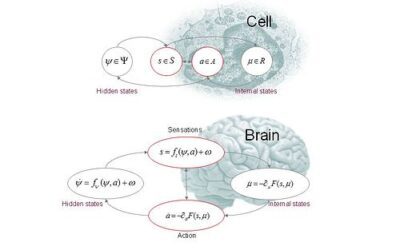
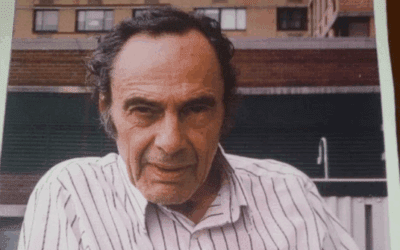


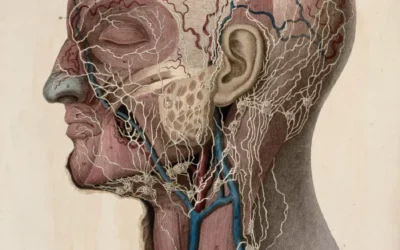

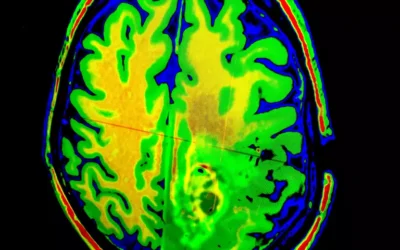
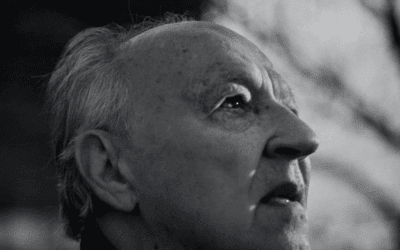






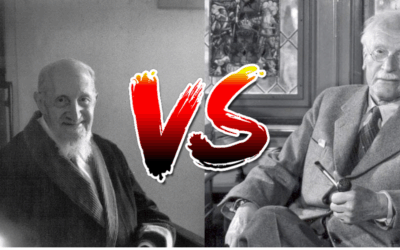









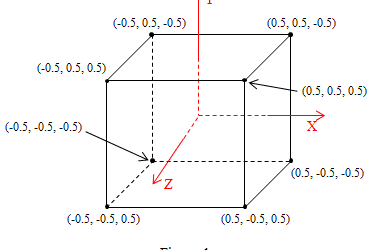
0 Comments